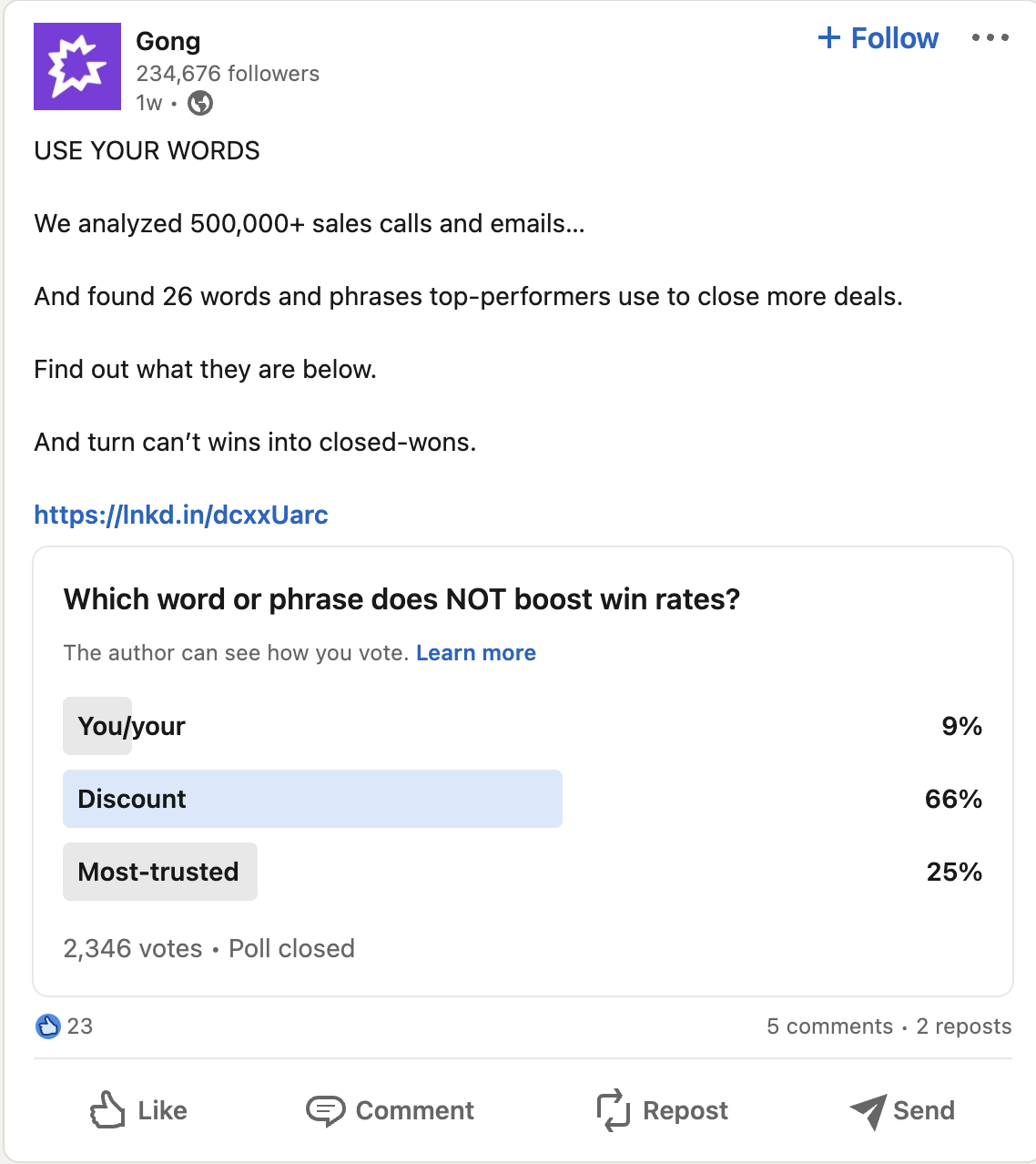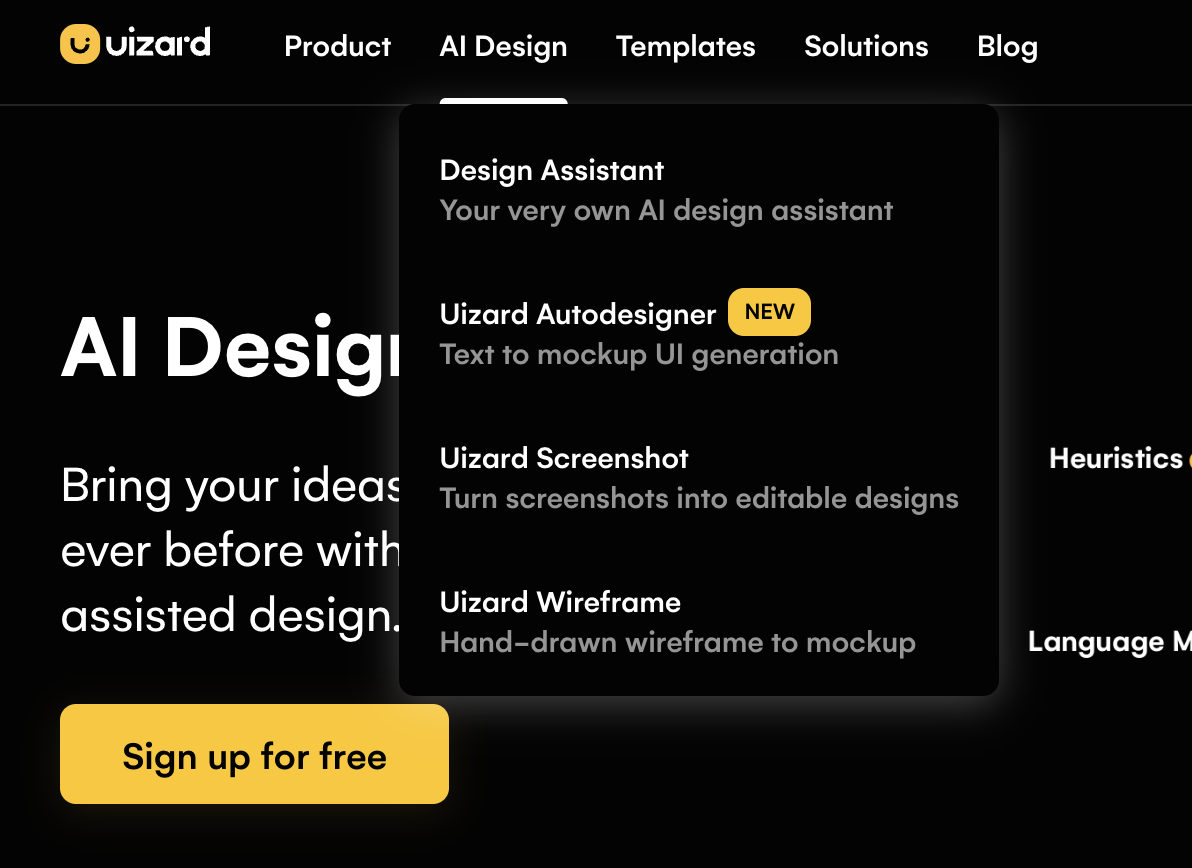Article's Content
AI startups are in an exciting but dangerous position: They’ve got incredible products that could change the world, but so do countless other companies.
Even worse, their customers have a hard time differentiating between two AI models unless they’ve used them first.
So, how do AI startups market themselves to ensure they get picked first?
In this article, we’ll break down how 6 companies are pitching their AI products in new, innovative ways to stand out. Even if AI’s not your thing, there’s plenty to admire and learn from these cutting-edge campaigns. So, let’s get right into it.
1. Abnormal Security
Cybersecurity sits at an exciting crossroads with AI innovation, making it a compelling use case — as long as customers understand why they need it and why AI makes it better.
They need it because cyber threats are constantly evolving. The AI-related risk that more companies are working to solve than any other is cybersecurity. According to some, the best way to counter it is by putting AI on your side. That’s because it ingests massive amounts of data, learns from it, and adapts to new threats faster, making it an invaluable tool in the cyber defense arsenal.
One standout company in this space is Abnormal Security. By including real-world examples of cyberattacks on its website, Abnormal Security illustrates its value proposition in a tangible and relatable way. Let’s take a look at these.

One of the first examples they’re giving here is Disney+. That should send up a dozen red flags for any executive: If this can happen to Disney+, it can happen to anyone who isn’t ready. The rest of that story isn’t any more encouraging, breaking down how the attack’s sophistication made it difficult to detect.

That, plus the obvious damage to customers and Disney+’s brand, creates an urgency that Abnormal knows how to follow up on perfectly. They provide readers with the cure to the problem through their own cybersecurity software.
These pieces accomplish two goals by both raising the reader’s awareness of important issues and creating an urgent call to action around Abnormal’s product. It’s a unique blend of sharable news, useful analysis, and a solid pitch all rolled into one.
The payoff? These “attack stories” make up eight of the ten highest-traffic pages on Abnormal’s blog. In fact, they generate 78% of the blog’s traffic, despite only making up about 21% of their blog posts. Each of these posts is punching well above its weight, and the long-term benefits are clear: They rank for a total of 1,700 keywords.
If you want to emulate their success, create content that speaks directly to the main use cases of your product. Here, it’s preventing and mitigating cyber threats. But you can do this just as easily with stories about companies that succeed or fail based on their use of proper accounting practices, quality CRMs, or whatever you’re solving.
2. Gong
Gong likes to cut to the chase and focus on their value proposition.
Rather than bombarding potential customers with technical jargon and AI buzzwords, Gong elegantly share how their technology can improve customers’ bottom lines. In fact, Gong likely use their own AI product to listen to their customers. By analyzing sales calls and customer interactions, the AI can identify the value propositions that resonate most with Gong’s audience.

That attention to their customers’ concerns and priorities carries over into their social media content as well. For example, this post features two great hooks with the promise of actionable advice and a quiz where participants get to see others’ opinions on an often-discussed topic in the industry.

The result? Almost 235,000 followers on LinkedIn, right where sales leaders (their ideal customers) are spending a lot of their time. Gong’s social media activity is making their brand more visible and driving people down their marketing funnel.
Smart marketers will use Gong as an inspiration for how to embrace different formats of content on LinkedIn. Here’s 5 types of content to play with:
- Carousels
- Polls
- Images
- Short-form videos
- Reposts with your thoughts
Want to learn more about what makes Gong’s marketing so special? Here’s a piece we wrote breaking down their entire LinkedIn strategy.
3. Moveworks
Moveworks take an interesting approach to marketing their no-code product: they don’t prominently mention it’s a no-code solution. This choice is incredibly effective for their non-technical audience, who may not be familiar with technical jargon like “no-code.”

Ironically, the term “no-code” can be intimidating for people who don’t code because although it’s more accessible, non-technical specialists also don’t know how a no-code program works. Why are you defining what you do by what you aren’t?
Instead, the company focuses on how to serve every team across a business, from finance to marketing.
Moveworks say what they are: an AI copilot. You don’t have to know how it works. In fact, that’s the point: their intended audience doesn’t understand the “how” of it all.
They follow this same method with their social media posts. They use emotion-driven imagery and a simple value proposition to motivate people to look at them more closely. And it works. Here’s a screenshot of the top comment from a recent LinkedIn post:

Their approach generated a good number of interactions and a solid lead with a Head of IT Services. For a small company with a growing social media presence, that’s about as good as you can hope for from a single LinkedIn post.
The same trend continues for the rest of their social media posts. Over a one-week period, they published eight LinkedIn posts. Of those, all had an image or video and five of those had pictures of people. These were a mix of webinar promotion, instructional videos, image posts like the one below, and reposts of user or customer stories.
This content mix let Moveworks build a following of over 24,000 on LinkedIn, so it’s worth considering how you can make your own social media posts equally varied and effective.
Consider how to incorporate clear value propositions and emotion-driven imagery in each of the following types of post:
- Customer success stories
- Event promotion
- Educational content
- Content promotion
- HR updates (e.g. showing pictures after an internal event)
If you can create a healthy mix of all of these kinds of posts, you’ll have the diverse kind of content that you need to offer in order for your following to snowball. For more advice on B2B marketing through LinkedIn, check out our full guide here.
4. Dataiku
Dataiku walk a careful line with their marketing strategy, catering to both technical and non-technical audiences by positioning their product as Everyday AI. This clever framing underlines the utility and ubiquity of AI, making it relevant and accessible to various industry verticals, not just the tech-savvy ones.

Dataiku emphasize that their AI can be harnessed for a wide variety of purposes, from marketing to supply chain optimization, without getting bogged down in too much jargon. The company consistently explains the benefits and applications of their product in clear, simple language that resonates with everyone — not just the technically inclined.
That’s the same quality that makes their YouTube videos succeed. Their “AI & Us” web series is a set of high-production videos that’s gotten hundreds of thousands of views explaining how AI can help everyone. Here’s an example:
In total, Dataiku’s YouTube channel has amassed over 9 million video views. If you’re interested in bringing in that kind of traffic to your own brand, you should follow their example by producing a set of accessible and high-quality videos on topics that regular people care about.
That doesn’t mean you have to ignore the more practical side of your product either — Dataiku’s demo video has 47,000 views, and their 45-minute lesson on data architecture has 58,000. But the demo is only three minutes long, and the data architecture lecture is a polished, high-quality presentation by experts, for people without a background in the subject.
Produce content where you can show off your expertise, but make it easy for others to understand.
This multichannel, accessible strategy helps Dataiku appeal to a broader market, demonstrating that AI is not just a high-tech luxury or a complex tool but an everyday resource that can streamline workflows and drive business growth across the board.
5. Uizard
You might not be sure how to pronounce its name, but that doesn’t mean that Uizard is bad at marketing. In fact, they’re pretty great at knowing exactly who their audience is.
Uizard excel in marketing by understanding and targeting their niche audience perfectly: individuals who are no good at designing user interfaces (UI). Not everyone has a natural flair for UI design or the time to learn the intricacies involved — and you don’t have to!
Uizard take this into account and position themselves as a go-to solution for such individuals. The company offers a range of easy-to-use templates, automated designing features, and other tools tailored to meet their audience’s needs.

In doing so, they eliminate the hurdles often encountered in UI design and allow anyone to create engaging, user-friendly interfaces with ease.
So it shouldn’t be a surprise to learn that Uizard’s highest traffic pages after their homepage are their two most popular templates, the templates homepage, their wireframe landing page, and their autodesigner. Combined, these pages alone bring in traffic valued at almost $7,000 a month.
The lesson here is how to target non-experts who still want professional-quality products. You need to make those products accessible with templates and automation that turn learning the new product into something fun and easy to do. This kind of marketing depends on putting effort into a few polished tools. It can be high-risk, but as you can see, the rewards can be generous too.
6. nate
nate (yes, lowercase) has raised $47 million, and their website looks deceptively simple. No pages drive more than 1,000 visits a month, and only a few break into the triple digits.
How is all that possible?
Well, nate’s brand is simplicity. So, their website reflects that.

nate is built to make shopping and sharing what you shop as simple as possible through AI. The company clearly explains that and shows you GIFs of the app at work. And that’s it.
In the same way, their social media strategy is simple but powerful. They focus on Instagram, where their over 16,000 followers see a unified brand image tied to dozens of partnerships with influencers. Just look at their latest posts and you can instantly see the simplicity and power of this strategy.

That’s all they need to do. Everything else is in the app, and the website is a testament to the confidence they have in their brand. So, of course, nate raised $47 million.
This level of product and marketing sophistication is worth a lot more than that.
How to Use These Lessons in Your Marketing Efforts
AI companies are on the cutting edge of tech in more than one way.
Yes, their products are innovative, but they also market them in unique and highly effective ways. If you want to keep up with them, you’ll need to adopt their strategies in your own marketing efforts.
But how do you innovate while keeping up with everything else you need to do?
Well, you could try using AI. In fact, that’s why we put together the AI Marketing Console. It’s a resource designed to help you unlock more time in your day by using AI to its full capacity. With it, you can understand your customers and reports sooner, create faster, and add more profits to the bottom line.
Want to try giving it a spin? Check it out here.







